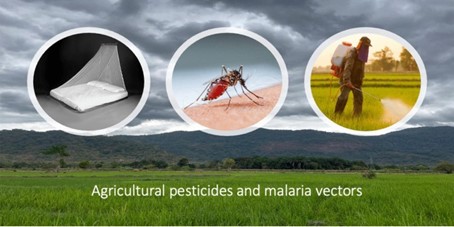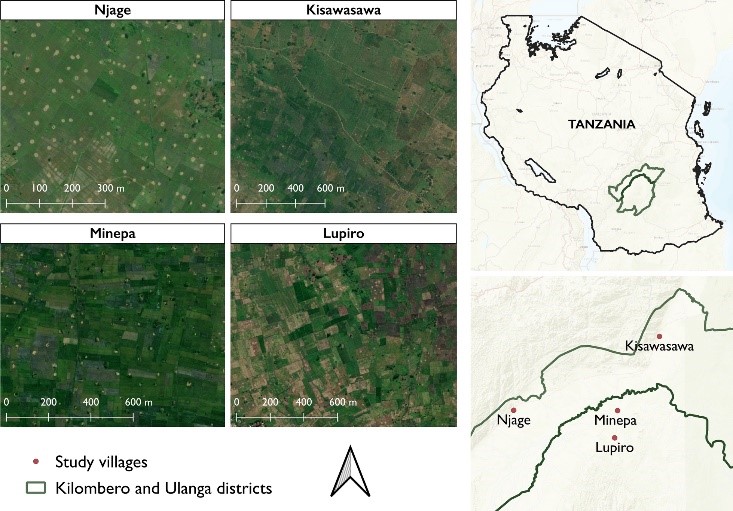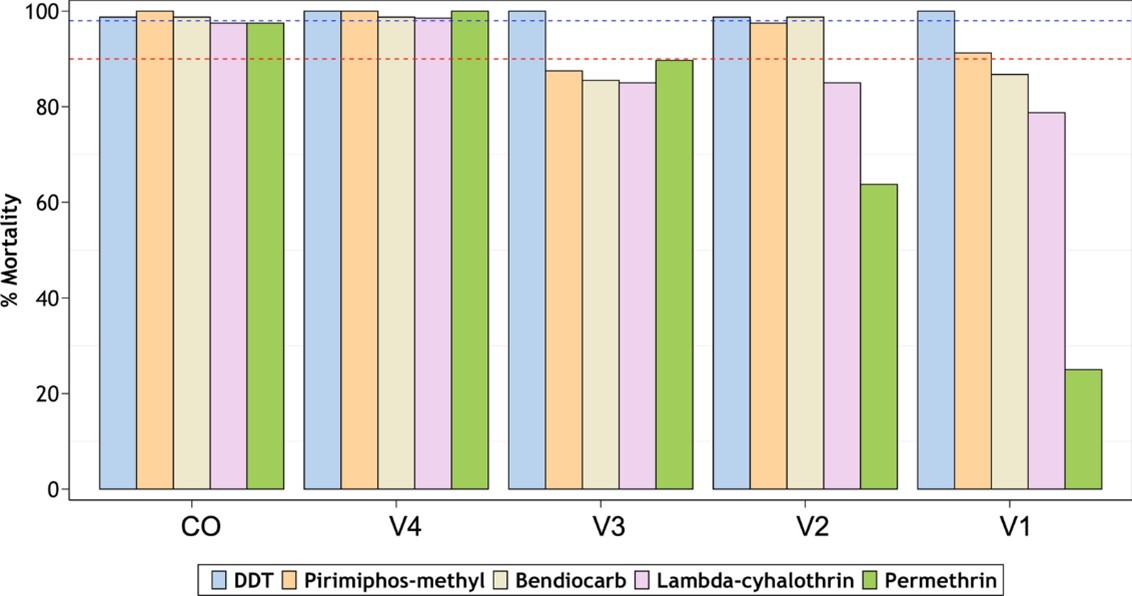
Malaria continues to persist globally despite many years of concerted efforts to control and eliminate the disease.
Across all malaria-endemic areas, Sub-Saharan Africa carries the heaviest burden of the disease, with approximately 96% of deaths reported worldwide occurring in this region.
Of the major control measures utilised to prevent the spread of malaria, control of mosquito vectors is a cornerstone of malaria prevention in Africa, and includes methods of Indoor Residual Spraying (IRS), Insecticide-Treated Nets (ITNs), environmental-based controls, and biological controls (e.g. natural predation by certain fish, geckos, etc.), among other things.
In spite of evidence of gradual declines in cases since the year 2000, the incidence of malaria is increasing, particularly in countries with high malaria burdens. Compared to 2019, 14 million more cases and 69,000 additional deaths were reported in 2020, leaving current estimates at approximately 241 million cases and 627,000 deaths from malaria worldwide each year.
Possibly worsening this, many vector control strategies are threatened by impending challenges, such as those resulting from shifts in malaria vector species distributions, changes in their biting patterns, and from widespread insecticide resistance in targeted malaria vector species.
Insecticide resistance is particularly worrying, as insecticides are a mainstay of many vector-based control measures. Several of the chemicals used in insecticides for public health settings are also used in agriculture, and there are similarities in the insecticide use practices and usage environments between the two sectors.
Generally, generation of insecticide-resistance in mosquitoes occurs through adaptations due the strong selection pressures exerted on mosquito populations resulting from their continuous contact with the insecticides. This leads to the ever-present risk of mosquitoes acting as vectors of malaria developing resistance through their continual exposure to high doses of insecticides due to their overlapping use in public health and agricultural practises, as shown by a study from Côte d’Ivoire.
Currently there is no stewardship of insecticide use in these sectors, nor integration of their management and use practises.
It’s been shown that insecticide-resistance can induce a ‘fitness cost’ in the resistant mosquito, such as those impacting their fecundity, larval development, adult emergence rates, body size, survivability and lifespan, among other things.
However, how such factors are associated with insecticide-resistance, if exposure to agricultural pesticides influences mosquito fitness, and if insecticide-resistance effects malaria transmission potentials, remains unclear.
An international group of researchers from Tanzania, South Africa, and Scotland set out to investigate these questions in a recent paper published in Parasites & Vectors. The grouped focused on four rural villages in south-eastern Tanzania.

They used an exploratory mixed-methods approach comprised of qualitative and quantitative aspects, including:
- Discussions with farmers about their land- and pesticide-use practises.
- Determination of pesticide resistance, fecundity, and wing lengths (termed fitness parameters) in mosquitoes collected from the four villages.
- Experimental exposure of laboratory-reared mosquitoes to sub-lethal doses of agricultural pesticides, subsequent measurements of resistance to public health insecticides, and changes in fecundity and wing lengths.
Farming practises in south-eastern Tanzania
Data showed that rice cultivation was most common across the four villages. Agrochemical use was heavy in three of the four villages, and mainly consisted of pyrethroid and organophosphate use.
Generally, farmers were found to lack awareness about the overlap and similarities between insecticides used in public health sectors, such as in IRS and ITNs, and agricultural sectors. They were however interested in learning more and were willing to undergo any necessary training so that their pesticide use does “not affect malaria control” efforts.
Susceptibility and fitness parameters of field-collected mosquitoes
Across all four villages, collected mosquitoes were found to be susceptible to DDT.
In three of the villages, resistance to two pyrethroids (lambda cyhalothrin and permethrin) was observed, and additional resistance to a carbamate (bendiocarb) and an organophosphate (pyrimiphos methyl) was detected in two of those same villages. Mosquitoes from only one village were found to be susceptible to all five pesticides (V4).
As for fitness parameters, overall fecundity was very similar in mosquitoes from all four villages, where as wing length varied slightly and ranged from 2.4 to 3.2mm.

Effects of sub-lethal pesticide exposures on fitness parameters of mosquitoes
Overall, there was no clear difference in insecticide susceptibility between mosquitoes exposed to sub-lethal doses of pesticides during their larval (aquatic stage), and those that weren’t exposed to pesticides.
Likewise, there were only minor decreases in fecundity in adult mosquitoes exposed to pesticides as larva, and those that weren’t exposed. Exposure to organophosphates prior to emergence as adults did however significantly reduce fecundity when the mosquitoes matured, as well as significantly reducing the overall wing length of those mosquitoes.
Conclusions to be drawn
In this study, mosquitoes collected from the four villages in south-eastern Tanzania were generally resistant to pesticides used in both public health and agricultural settings, except one village that reported minimal pesticide use, with mosquitoes from this village determined to be the most susceptible population studied. This demonstrates a clear association between agricultural pesticide use, public health insecticide use, and mosquito resistance.
The impact of agricultural pesticides on mosquito ‘fitness’ was only marginal, however. The authors note that this marginal difference may reflect the fact that any resistance-associated fitness cost in these mosquitoes may occur over multiple generations of pesticide exposure, and so should be investigated further and over longer time periods.
This work also highlights the need to improve management of agrochemical use, and the necessity for an integrated approach of insecticides usage in agricultural and public health sectors in order reduce the risk of widespread insecticide resistance developing in mosquito populations, as this would inhibit and undermine malaria vector control measures.

Comments